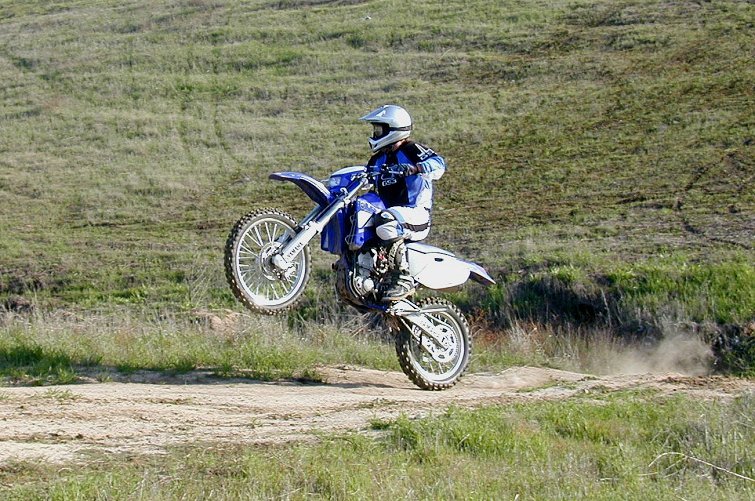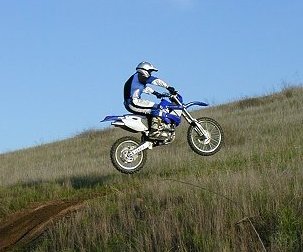
We’ve spent more time on Yamaha’s new WR250F. It reinforced our initial impressions of the bike. We re-jetted the bike again, to try and cure a slight flat spot in the mid-range. We ended going richer with the needle (one groove richer than stock) and bringing the main jet back down to stock (or slightly richer, depending on your altitude). As we said earlier, the motor is extremely impressive — pulling very hard over a broad rpm range.
This bike will not give you the thrust of a full 400, of course, but it provides more than enough power for most situations. There is a torquey pull off idle, a smooth mid-range and a surge up top.
The suspension is set up very well stock. It is firm for aggressive riding, but never harsh at either end. Yamaha has really refined its suspension settings this year.

The five-speed transmission has a much better spread for off-road work than the YZ250F. Although, I would prefer a six-speed transmission on a 250 four-stroke, there really is a gear for most every situation.
Gear engagement and clutch work were never a problem. In general, the engine and transmission performed extremely well — setting new standards for an off-road 250 four-stoke machine.
The excellent brakes come straight off Yamaha’s motocross racers. Powerful and controllable, you really don’t need to think about the brakes while riding.
Although the bike handles well, I still have a problem with the ergonomics created by the gas tank. The seat/tank juncture keeps you too far back on the saddle for many aggressive riding situations, and the shape of the tank did not feel comfortable when gripping the bike with my legs. Many other riders have noticed this, and there are after-market solutions available, but they are rather expensive.
Basically, you can cure this problem with a YZ-style seat and a lower gas tank (Ty Davis’ company can sell you this solution, for example). This is the one “fly in the ointment” regarding the performance of this bike once it is started.

The other fly is starting the bike. This bike can be extremely difficult to start. It is frustrating because the bike will sometimes start relatively easily, but other times it simply refuses to start after many, many kicks. I resorted to push starting the bike more than once. I won’t even try to guess what the problem is, but several suggested techniques failed to work consistently. This problem continued even after reaching a jetting solution.
In the WR250F, Yamaha has created an engine and chassis designed for racing and aggressive trail riding. In these respects, the bike is really on a par with the serious off-road weapons produced by KTM, for example. Nevertheless, Yamaha needs to address the ergonomics of the seat-tank relationship in future models so that racers and other aggressive riders can maneuver on the bike better.
As far as the problem we had starting the bike, I would like to hear from readers who have purchased the WR250F. This was a very frustrating situation for us, and if it is not something commonly encountered by other riders of this machine, we need to point it out.





